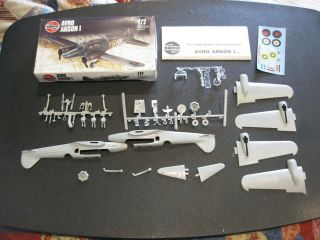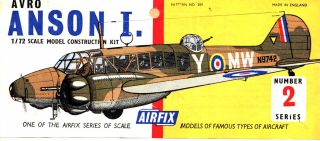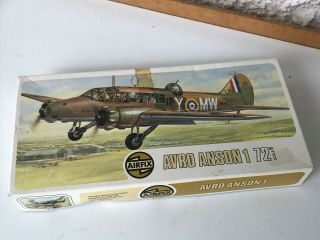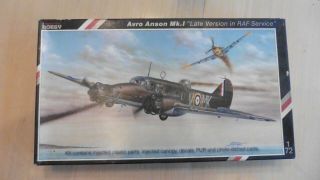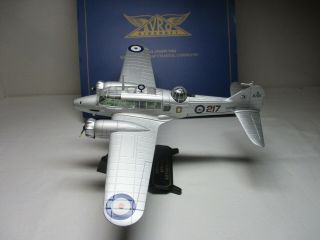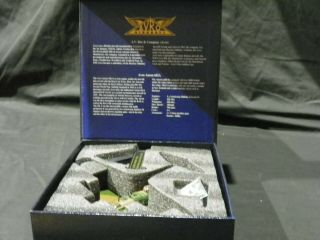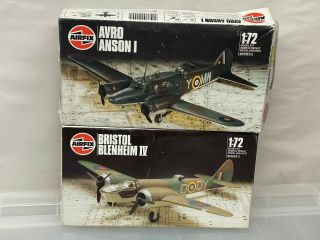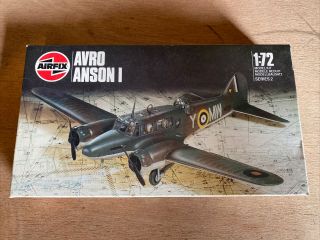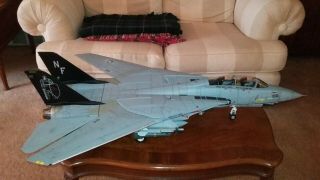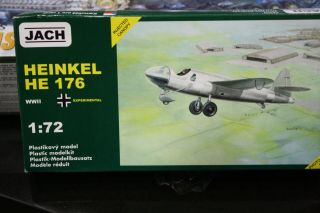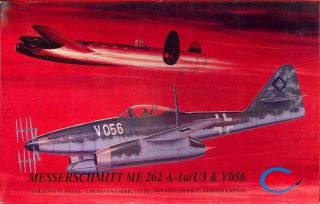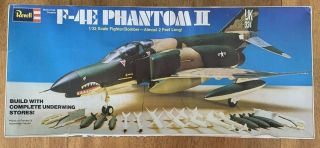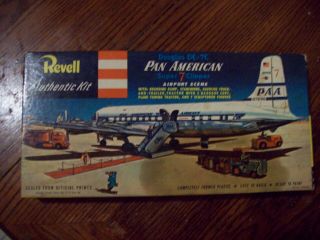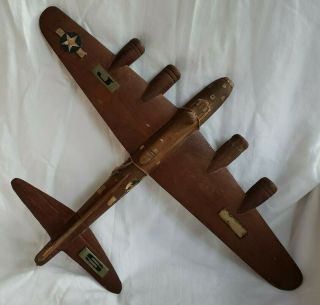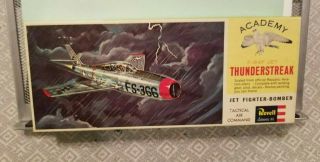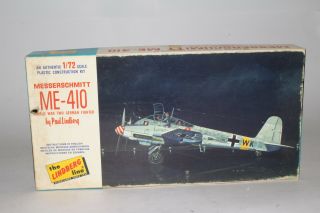AIRFIX 1/72 AVRO ANSON Mk. I KIT No. 289 WW2 RAF TWIN - ENGINE MULTI - ROLE AIRCRAFT
Item History & Price
| Reference Number: Avaluer:60622092 |
AIRFIX1/72 AVRO ANSON Mk.I KIT No.289 WW2 RAF TWIN-ENGINE MULTI-ROLE AIRCRAFT (THISKIT RELEASED IN 1963) RAF No.321 (DUTCH) SQN. (KONINKLIJKE LUCHTMACHT)OPEN BOX UNBUILT PLASTIC MODELKIT – INVENTORIED 100% COMPLETEIF YOU HAVE ANY QUESTIONS ORCONCERNS PLEASE ASK ME BEFORE BIDDING / PURCHASING – I WANT EVERYONE TO BE 100%SATISFIED WITH NO SUR...PRISES OR MIS-UNDERSTANDINGS---------------------------------------------------------------------------------------------------------------------------------Additional information from InternetEncyclopedia The Avro Anson is a British twin-engined, multi-role aircraft that served with the Royal Air Force, Fleet Air Arm, RoyalCanadian Air Force and numerous other air forces before, during, and after theSecond World War. Developed from the Avro 652 airliner, the Anson, named afterBritish Admiral George Anson, was developed for maritime reconnaissance, butfound to be obsolete in this role. It was then found to be suitable as amulti-engined aircrew trainer, becoming the mainstay of the BritishCommonwealth Air Training Plan. By the end of production in 1952, a total of8, 138 had been built by Avro in nine variants, with a further 2, 882 built byFederal Aircraft Ltd in Canada from 1941.In 1933, theBritish Air Ministry proposed that the Royal Air Force (RAF) acquire a relativelycheap landplane for coastal maritime reconnaissance duties, as a supplement tothe more capable, but expensive Flying boats that the RAF used for maritimereconnaissance. The Air Ministry requested tenders for aircraft to meet thisrequirement, with Avro responding with the Avro 652A, a modified version of theAvro 652 twin-engined, six-seat monoplane airliner. The Air Ministry placedorders with Avro and de Havilland for single examples of the Type 652A and thede Havilland DH.89 for evaluation against this requirement late in 1934, withevaluation and selection of a design for production to take place by May 1935.The Avro 652A first flew on 24 March 1935 at Avro's Woodford factory, and wasevaluated against the DH.89M by the RAF Coastal Defence Development Unit atGosport from 11 to 17 May. The Avro aircraft proved superior, and was selectedas the winner of the competition on 25 May. Air Ministry Specification 18/35was written around the Type 652A, and an initial order for 174 aircraft, to becalled "Anson", was placed in July 1935. The first production Ansonmade its maiden flight on 31 December 1935, with changes from the prototypeincluded an enlarged horizonal tailplane and reduced elevator span to improvestability. Deliveries to the RAF began on 6 March 1936. The Anson Mk I wasa low-wing cantilever monoplane with a retractable undercarriage, the type withthis configuration to enter service with the RAF. It had a wooden wing, ofplywood and spruce construction, while the fuselage was constructed of steeltubing, mainly clad in fabric, but with the aircraft's nose clad in magnesiumalloy. It was powered by two Armstrong Siddeley Cheetah IX seven-cylinderair-cooled radial engines, rated at 350 horsepower (260 kW) each, drivingtwo-bladed metal propellers. The aircraft's retractable tailwheel undercarriagewas manually operated, requiring 144 turns of a crank handle situated by thepilot's seat. To forgo this laborious process, early model aircraft often madeshort flights with the landing gear extended at the expense of 30 mph(50 km/h) of cruising speed. Initially, theAnson was flown with a three-man crew (pilot, navigator/bomb-aimer andradio-operator/gunner) in the maritime reconnaissance role, but from 1938 itoperated with a four-man crew. Armament consisted of a single .303 in (7.7 mm)Vickers machine gun fixed in the forward fuselage and aimed by the pilot, withan Armstrong Whitworth manually operated dorsal gun turret fitted with a singleLewis gun. Up to 360 pounds (160 kg) of bombs, consisting of two 100pounds (45 kg) and eight 20 pounds (9 kg) bombs, could be carried inthe aircraft's wings. Ansons used for training were fitted with dual controlsand usually had the gun turret removed, although aircraft used for gunnery trainingwere fitted with a Bristol hydraulically-operated gun turret similar to thatused in the Bristol Blenheim. A total of 11, 020Ansons were built by the end of production in 1952, making it the second mostnumerous (after the Vickers Wellington), British multi-engined aircraft of thewar.The Anson enteredservice on 6 March 1936 with 48 Squadron equipped with the Anson. At the startof the Second World War, the RAF had received 824 Ansons and there were 26 RAFsquadrons operating the Anson I: 10 with Coastal Command and 16 with BomberCommand. All of the squadrons in Bomber Command in 1939 with Anson Is wereoperational training squadrons that prepared crews for frontline service. 12 ofthe squadrons were in No. 6 (Operational Training) Group. Newly formed crews havingcompleted individual flying and technical training were first trained as bombercrews in Ansons and then advanced to the various frontline aircraft types, which were also in the same squadrons with the Ansons. After training in thefrontline aircraft type, crews would advance to the frontline bomber squadronswith those aircraft types (Fairey Battle, Bristol Blenheim, Vickers Wellington, Armstrong Whitworth Whitley, and Handley-Page Hampden). At the start of thewar, the Lockheed Hudson was beginning to replace the Ansons in Coastal Commandwith one squadron of Hudsons and one with both Ansons and Hudsons.Limited numbers ofAnsons continued to serve in operational roles such as coastal patrols andair/sea rescue. Early in the war, an Anson scored a probable hit on a GermanU-boat. In June 1940, a flight of three Ansons was attacked by nine LuftwaffeMesserschmitt Bf 109s. Remarkably, before the dogfight ended, without losingany of their own, one of the Ansons destroyed two German aircraft and damaged athird. The aircraft'strue role, however, was to train pilots for flying multi-engined bombers suchas the Avro Lancaster. The Anson was also used to train the other members of abomber's aircrew, such as navigators, wireless operators, bomb aimers and airgunners. Postwar, the Anson continued in the training and light transportroles. The last Ansons were withdrawn from RAF service with communicationsunits on 28 June 1968. The RoyalAustralian Air Force operated 1, 028 Ansons, mainly Mk Is, until 1955.The Royal CanadianAir Force and Royal Canadian Navy operated the aircraft until 1952. Althoughthe Canadian Ansons were used throughout the training schools of the BritishCommonwealth Air Training plan for training aircrew some were pressed intooperational service with the RCAF's Eastern Air Command. A good example of thetraining schools involvement in combat operations with the EAC during theemergency of the battle is illustrated in an article dated the 1st of March, 2006 of the Royal Canadian Legion magazine entitled Eastern Air Command: AirForce, Part 14 the author Hugh A. Haliday wrote: "The need for Atlanticpatrols was undiminished, yet the Battle of the St. Lawrence stretched EACresources. Based at Charlottetown, 31 General Reconnaissance School wasmobilized to fly patrols using Avro Ansons, each carrying two, 250-pound bombs.At the very outset of the war the Anson and its ordnance had failed in RAFanti-submarine work. Now in Canada it was remobilized as an aerial scarecrow.German views varied as to Canadian countermeasures. The captain of U-517 foundhis operations increasingly restricted by strengthened air patrols. In October1942, U-69 reported “strong sea patrol and constant patrol by aircraft withradar.”The Royal IndianAir Force operated several Ansons as part of the No.1 Service Flying Training School (India) for Pilot andNavigation training. These Ansons continued this role post independence andwere retired at an unknown date.The Royal NewZealand Air Force operated 23 Ansons as navigation trainers in the Second WorldWar, (alongside the more numerous Airspeed Oxford), and acquired more Ansons ascommunication aircraft immediately after the war. The United StatesArmy Air Forces (USAAF), employed 50 Canadian-built Ansons, designated the AT-20.The Egyptian AirForce operated Ansons in communications and VIP duties. A specially outfittedAnson was given to the then King by the Royal Air Force. The Royal AfghanAir Force obtained 13 Anson 18 aircraft for various duties from 1948. Theseaircraft survived until 1972.During the 1939-45war years the British Air Transport Auxiliary used the Avro Anson as its standardtaxi aircraft, carrying groups of ferry pilots to and from aircraft collectionpoints. There was no fatal mechanical failure of an Anson in ATA service and itwas very well regarded.
Shipping & HandlingBack to Top US ShippingPlease check eBay's Shipping & Payment tab
USPS First-Class Mail®
International ShippingPlease check eBay's Shipping & Payment tab
USPS First-Class Mail International (Worldwide)
USPS First-Class Mail International (Canada)
FREE scheduling, supersized images
and templates. Get Vendio Sales Manager.Make your listings stand out with
FREE Vendio custom templates!
FREE scheduling, supersized images
and templates. Get Vendio Sales Manager.
Over 100, 000, 000 served. Get FREE counters from Vendio today!




